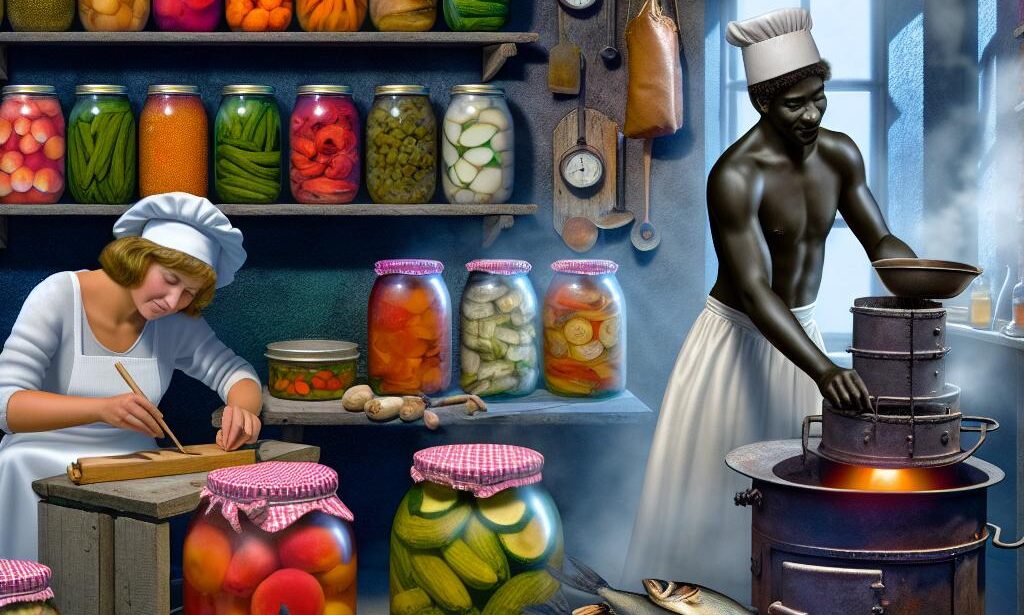Food preservation is a crucial aspect of ensuring that our food remains safe to eat and maintains its flavor for as long as possible. In this article, we will explore various techniques that can be used to maximize the taste of preserved foods, allowing you to enjoy them for longer periods of time without sacrificing quality. From canning to freezing, we will delve into the methods that can help you preserve the taste of your favorite foods.
Table of Contents
- Introduction: The Importance of Maximizing Taste in Food Preservation
- Understanding the Science Behind Flavor Retention
- Key Techniques for Enhancing Taste in Food Preservation
- Recommendations for Preserving Maximum Flavor in Different Types of Foods
- Innovative Approaches to Maximizing Taste in Food Preservation
- Q&A
- Key Takeaways
Introduction: The Importance of Maximizing Taste in Food Preservation
When it comes to food preservation, one of the key factors that often gets overlooked is taste. Maximizing taste in preserved foods is crucial for ensuring that the end product is not only safe to eat but also delicious. Whether you are pickling vegetables, curing meats, or canning fruits, there are various techniques that can help you preserve the taste of your food.
One important aspect of maximizing taste in food preservation is using high-quality ingredients. Fresh, ripe produce and high-quality meats will always result in a better-tasting preserved product. Additionally, using the right combination of herbs, spices, and seasonings can enhance the flavor of your preserved foods. Properly balancing sweet, salty, sour, and savory flavors is key to creating a delicious end product.
Another technique for maximizing taste in food preservation is choosing the right preservation method. Some preservation methods, such as freezing or vacuum sealing, can help lock in the natural flavors of the food. Others, like smoking or fermenting, can add unique and complex flavors to the preserved food. By experimenting with different preservation methods, you can discover new ways to enhance the taste of your preserved foods.

Understanding the Science Behind Flavor Retention
When it comes to preserving the flavor of food, is key. By utilizing various techniques in food preservation, you can maximize taste and ensure that your dishes remain delicious for longer periods of time.
One important factor in flavor retention is the use of proper packaging. Oxygen exposure can lead to oxidation, which can cause food to spoil and lose its flavor. By using airtight containers or vacuum sealing, you can prevent oxygen from affecting the taste of your food.
Another technique to consider is the use of additives such as salt, sugar, and vinegar. These ingredients not only enhance flavor but also act as preservatives by inhibiting the growth of bacteria and mold. By incorporating these additives into your preservation process, you can prolong the shelf life of your food while maintaining its delicious taste.

Key Techniques for Enhancing Taste in Food Preservation
Preserving food while maintaining its taste can be a challenging task, but with the right techniques, you can ensure that your preserved foods are not only safe to eat but also delicious. Here are some :
- Proper seasoning: Seasoning your preserved foods with the right combination of herbs, spices, and flavorings can help enhance their taste. Experiment with different seasonings to find the perfect balance for your dishes.
- Use of high-quality ingredients: Starting with fresh, high-quality ingredients is essential for preserving the taste of your food. Choose the best produce, meats, and other ingredients to ensure that your preserved foods are flavorful.
- Optimal storage conditions: Proper storage is crucial for maintaining the taste of preserved foods. Store your preserved foods in a cool, dark place to prevent spoilage and preserve their flavor for longer.
| Technique | Benefits |
|---|---|
| Proper seasoning | Enhances flavor profile |
| Use of high-quality ingredients | Ensures delicious taste |
| Optimal storage conditions | Preserves flavor for longer |

Recommendations for Preserving Maximum Flavor in Different Types of Foods
Preserving the maximum flavor in different types of foods is essential to ensure that your dishes are as delicious as possible. Here are some recommendations to help you achieve this:
- Fruits and Vegetables: When preserving fruits and vegetables, opt for freezing or canning to lock in their freshness. For maximum flavor, blanch vegetables before freezing and use a light syrup for fruits.
- Meats: To preserve the flavor of meats, consider vacuum sealing before freezing. Marinating meats before freezing can also enhance their taste when cooked.
- Dairy Products: For dairy products like cheese and butter, store them in airtight containers in the refrigerator to prevent them from absorbing other odors and flavors.
| Food Type | Preservation Technique |
|---|---|
| Fruits | Freezing or canning |
| Vegetables | Blanching before freezing |
| Meats | Vacuum sealing |

Innovative Approaches to Maximizing Taste in Food Preservation
When it comes to preserving food, maintaining taste and flavor is essential. Innovative approaches have been developed to maximize taste in food preservation, ensuring that the quality of the food is not compromised. One technique that has gained popularity is vacuum sealing, which helps to remove air from the packaging to prevent oxidation and preserve the taste of the food.
Another method that is being used is freeze-drying, which involves freezing the food and then removing the ice crystals through sublimation. This process helps to retain the flavor and nutrients of the food, making it a popular choice for preserving fruits, vegetables, and even meats. Additionally, fermenting and pickling are traditional methods that have been used for centuries to preserve food while enhancing its taste.
Q&A
Q: What is food preservation and why is it important?
A: Food preservation is the process of extending the shelf life of food while maintaining its taste, texture, and nutritional value. It is important because it helps prevent food waste and allows for the enjoyment of seasonal produce year-round.
Q: What are some common techniques used in food preservation?
A: Some common techniques include canning, freezing, drying, pickling, and fermenting. Each method has its own benefits and is suited for different types of foods.
Q: How does canning work and what foods are best preserved using this method?
A: Canning involves sealing food in airtight containers and heating them to kill bacteria and other microorganisms. Foods high in acidity, such as fruits and tomatoes, are best preserved using this method.
Q: What are the benefits of freezing food for preservation?
A: Freezing food helps to slow down the growth of bacteria and enzymes, preserving the taste and texture of the food. It is a convenient method for preserving a wide variety of foods, including fruits, vegetables, meats, and prepared meals.
Q: How does pickling work and what types of foods are commonly pickled?
A: Pickling involves submerging food in a brine solution of vinegar, salt, and spices. Commonly pickled foods include cucumbers, onions, peppers, and cabbage. Pickling not only preserves the food but also adds a tangy flavor.
Q: What is fermentation and how does it preserve food?
A: Fermentation is a process in which microorganisms, such as bacteria and yeast, break down sugars in food to produce acids, alcohol, and gases. This process not only preserves the food but also enhances its flavor and nutritional value. Foods commonly fermented include yogurt, sauerkraut, and kimchi.
Q: How can individuals maximize taste when preserving food?
A: To maximize taste when preserving food, it is important to use fresh, high-quality ingredients, follow proper preservation techniques, and store the preserved food in appropriate conditions. Experimenting with different spices and flavorings can also enhance the taste of preserved foods.
Key Takeaways
In conclusion, utilizing proper techniques in food preservation can greatly enhance the taste and quality of your food. By understanding the principles of preservation and implementing the right methods, you can enjoy delicious and flavorful meals for longer periods of time. Whether you choose to can, freeze, dry, or ferment your food, the key is to follow best practices to maximize taste and ensure food safety. Experiment with different preservation methods to find what works best for you and your culinary preferences. With a little knowledge and effort, you can savor the flavors of your favorite foods all year round.

